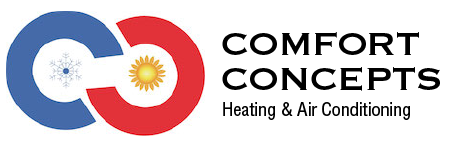We all like saving money on our monthly utility bills, but it turns out there’s a way to keep costs down, even when you’re out of the house.
It starts with your thermostat. By learning more about its special features and settings, you can tailor the temperature to your needs. That means you can have different temperature settings for when you’re home, away or even when you’re asleep.
If you’re willing to make these adjustments, you have more time to enjoy pleasant temperatures while cutting down your energy bills. Here are some ways your thermostat can be a source of energy savings:
While at Home
Whenever you’re at home, you want a nice range of pleasant temperatures. It’s only natural to want your thermostat lower in the summer while you are in the house to appreciate the cool air.
But the most energy-efficient temperatures for the summer is usually between 78 and 80 degrees Fahrenheit. With this adjustment, you’ll avoid the worst of summer while keeping your energy bill more manageable.
While Away
If you’re setting the temperature for when you are out of the house in summer, the majority of homeowners will set the thermostat higher for while they’re gone.
Depending on the local climate or your home’s location, you can set the thermostat to temperatures as high as 88 degrees while no one is home before lowering it back to the sweet spot of 78-80 degrees after you return. This way, your air conditioning system isn’t working around the clock to cool an empty house.
While Asleep
When it comes to sleeping in the summer, you want a nice cool temperature. A great place to start is between 68-72 degrees Fahrenheit. This will keep you from getting too hot or too cold when you are trying to get some rest.
Other Ways to Use Less Energy:
- Put in a smart thermostat: Using a smart thermostat in the summer can lower energy costs since it can plan your temperature adjustments according to your lifestyle and idea of what comfortable is. It’ll take care of making changes while you are home or sleeping, before allowing it to warm up when no one is around. With models like the Lennox iComfort, you are able to adjust settings and schedules through your smartphone, tablet or laptop. Planning smart thermostat installation in your Yukon home can be the simplest strategy for maintaining comfortable, yet energy-efficient temperatures no matter where you are.
- Upgrade your HVAC system: A new HVAC system is another great option for long-term energy savings. With greater energy efficiency, your utility bills will be lower because it requires less energy to heat and cool your home. Air conditioning installation in Yukon is a great way to beat the heat in the summer.
- Keep up with AC maintenance: Investing in or ignoring regular air conditioning maintenance in Yukon can have a significant impact on your utility bills. By regularly cleaning the coils, checking for damage and clearing air vents of dust and debris, this can help your HVAC system run more efficiently. Increasing efficiency also limits strain on key parts and lowers operational costs, lowering total energy use and eventually the total monthly bill.
- Clean or replace the air filter on a regular basis: A regular schedule for cleaning or replacing the HVAC system’s air filter saves money by improving airflow. When filters are old and less effective, an AC unit has to work harder, and the added strain may impact the system’s life span and lead to breakdowns.
- Verify your attic has enough insulation: Insulation is a crucial component for any energy-efficient home, securing the hot air outside and the cool air inside over the summer. The North American Insulation Manufacturers Association (NAIMA) offers an official recommendation stating homeowners in souther states should have at least 13-14 inches of insulation, while those in northern U.S. states should have 16-18 inches.
- Review your air ducts: A leak in the air ducts could increase your energy bills much more than 20 percent, plus it can affect equipment such as your water heater, clothes dryer and other appliances to get into the atmosphere of your home. Finding any leaks fast and sealing them can help with both these issues.
- Seal all other leaky spots in your home: Sealing up other leaks in your home with caulk, foam sealant or weather-stripping keeps temperatures a little cooler on hot summer days. You should also check for any gaps around windows, doors and even outdoor fixtures. Taking the time to seal up any leaks now can help you save a lot in the long run.

